Notre Dame Law Professors discuss their new book on the impact of Catholic school closures in urban neighborhoods
The benefits associated with an education at a Catholic school are well documented. Students at these schools tend to do very well, on average, in comparison to state averages on standardized tests and other measures of academic achievement. Less well documented, however, are the broader benefits conferred by Catholic schools on the communities in which they are enmeshed.
In a new book published by University of Chicago Press, Nicole Stelle Garnett, Professor of Law, and Margaret F. Brinig, Fritz Duda Family Chair in Law, explore the role of Catholic schools in the development of social capital and community cohesiveness through studying the effects of Catholic school closures on urban neighborhoods in Chicago, Philadelphia, and Los Angeles. Lost Classroom, Lost Community offers a unique exploration of Catholic schools as community builders, and how the closure of Catholic schools (more than 1,600 have been closed throughout the United States in the last two decades) has detrimental effects that reach beyond the students and into the community at large. The Rover interviewed Garnett and Brinig to find out more about this new research.
Rover:Why this book now? How did you come to be interested in the dynamic between urban Catholic school closings and the possible effects of such a closing on measurable standards of community well-being?
Garnett: A few years ago, I attended a White House Summit on inner city children and faith-based schools with some colleagues in the Alliance for Catholic Education. The conference was focused on how to save these schools for poor kids that need them as schools. There is plenty of evidence suggesting that religious schools—especially Catholic schools—excel at educating disadvantaged children. But, during breaks in the program, I overheard informal conversations about how important the schools were to neighborhoods —”when the school closes, the neighborhood declines,” etc.
Most of my research up to this point had focused on property and land use laws, and their effects on communities, but I have always been passionate about education reform. So I was intrigued. I returned to Notre Dame and started talking to my colleague, Peg Brinig about how we might test the claim that Catholic school closures hurt urban neighborhoods. We’re both interested in social capital—that is, the social bonds, relationships, trust, and norms that bind communities together and make them function smoothly. So it was a natural fit. The book emerged from a multi-year research project that started with those conversations. What we found confirmed the hunches expressed in the hallways at the White House Summit: Catholic school closures appear to trigger increased crime and disorder and to suppress social capital and trust in urban neighborhoods in Chicago and Philadelphia.
Does your research suggest anything distinctly unique about the communal benefits offered by the very presence of a Catholic school versus those offered by other schools (public, charter, etc.)?
Brinig: Yes and no. We compared the effects of open Catholic schools to open charter schools on Chicago neighborhoods. We found that open Catholic schools were strongly correlated with lower crime. Controlling for demographics, a police beat in Chicago with an open Catholic school experienced over 30 percent less serious crime during the period we studied than police beat that lost a Catholic school. We didn’t find the same effect for charter schools. Charter schools weren’t associated in a statistically significant way with crime (either up or down). We are careful here to say that these effects are only correlations. For a variety of reasons, we can’t draw causal conclusions about this comparison—although we do believe that Catholic school closures are causally related to more crime. We didn’t measure the effects of public school closures; we didn’t have the data.
Given the results of your study, what hypotheses do you have as to why/how Catholic schools transmit these benefits to the community – whether through the distinct value of a Catholic education or merely the message sent by the presence of a Catholic school in an urban neighborhood?
Garnett: Our hypothesis—and it is only a hypothesis—is that Catholic schools are good community institutions for the same reasons that they are good educational institutions. The important research (by Anthony Bryk, James Coleman, and Fr. Andrew Greeley among others) on the so-called “Catholic school effect” finds that one of reasons why Catholic schools do so well at educating disadvantaged children is that Catholic schools are characterized by a high level of within-school social capital. In other words, members of the school community (teachers, administrators, parents and students) trust and support each other and hold one another to high standards. It seems logical that this social capital may generate what economists would call “positive externalities” that spill over into the broader community.
We also suspect that, in really tough neighborhoods, the presence of a successful Catholic school signals to residents that success is possible, that the community is worthy of investment. When the school fails, perhaps the closure sends the opposite—demoralizing—message. The closure is like a public declaration that the community is not worthy of investment anymore.
Did your research reveal anything about the central reasons for many Catholic school closings? Would you consider this trend a crisis for the success of urban neighborhoods?
Garnett: There are many reasons why Catholic schools are closing. The decline in vocations (especially among religious women) has resulted in dramatically increased costs, and increased tuition—making a Catholic education inaccessible to many parents who would like to send their kids to schools. Catholics suburbanized (and secularized) after WWII, leaving urban parishes without the resources to support parish schools. Most Catholic parents today send their kids to public schools. As a result of all of these things, enrollments are down and schools sometimes feel like a burden to the pastors charged with running them. The Church has been forced to make very painful decisions to close many schools—probably over 2000 in the last two decades. This is undoubtedly a hit for urban neighborhoods that need these stabilizing community institutions. But, it is also a hit for families desperate for good schools for their kids. In both senses, yes, Catholic school closures are a crisis for urban neighborhoods.
What is the role of the pastor in the success of a Catholic school/church community? Is there a need for more effective leadership from lay people in the administration of these communities? And does the research say anything about how a dearth of vocations to the priesthood could contribute to these closings?
Brinig: The pastor plays a critical role. When we first started our research, we met with Sister Mary Paul McCaughey, who is the superintendent of Catholic schools in the Archdiocese of Chicago. She told us that the support of the pastor is critical; when a pastor is supportive, the schools usually overcome obstacles that might lead them to close. We actually measured this effect empirically in our book. We find that schools in parishes without pastors (that is, with administrators) or where a priest has been accused of abuse, are far more likely to close.
Of course, lay leadership—especially the leadership of the principal in a school—is critical as well. A strong principal is essential to the health of any school, especially an urban Catholic school. But, we didn’t have data to measure this empirically.
What do you see as possible solutions to the problem? Both from a public policy standpoint and considering what internal improvements may be made on the part of the schools themselves?
Garnett: We believe that the findings in our book bolster the case for parental choice—that is, for programs that enable parents to use public resources to send their child to the school that best serves their needs (public, charter or private/religious). Where parental choice is an option—and currently 20 states and the District of Columbia have parental-choice programs —many parents choose Catholic schools for their kids. Our book suggests that parental choice is more than good education policy—it is also good community development policy.
But, you are right that the Church can do many things itself to strengthen and transform Catholic schools so that they can survive and thrive. First, as Professor Brinig mentioned, leadership is critical. The Church can make sure that pastors who love Catholic schools are placed in parishes with schools that need them. And, the Church can take care to find and form strong school leaders. Here, I think that Catholic universities play a critical role. Programs like ACE and the ACE Leadership Program, which form teachers and leaders for Catholic schools, make a huge difference. Many Catholic universities are taking a renewed interest in supporting Catholic schools, including through teacher- and leadership-formation efforts, which is very promising.
Second, Catholic schools need to attract Latino families. Nearly 60 percent of practicing Catholics under the age of 40 are Latino, but only 3 percent of Latino families choose Catholic schools for their kids. Latino kids benefit immensely from Catholic schools. A Latino boy who attends Catholic high school is 42 percent more likely to graduate from high school and 2.5 times more likely to go to college. And, we should not forget the importance of the faith formation provided by Catholic schools for these kids—who are the future of the Catholic Church. Many Latino families live in neighborhoods with Catholic schools. We need to find a way to reach out to them and to make Catholic schools affordable.
Third, Catholic lay leaders can support Catholic schools with their time, talent and treasure. Organizations like Chicago’s Big Shoulders Fund, which supports poor Catholic schools in Chicago, are immensely important—both to the schools and the kids who benefit from them.
Tim Bradley is a junior living in St. Edward’s Hall. He is very grateful for his education at St. Matthew’s Cathedral School and St. Joseph’s High School here in South Bend, and for the role they play in shaping the South Bend community. Contact him at tbradle5@nd.edu.
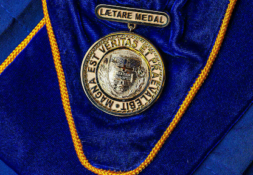
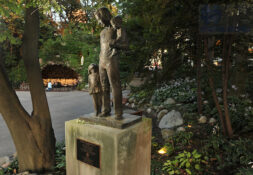
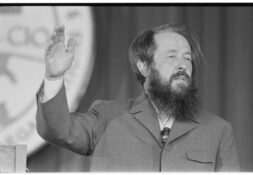
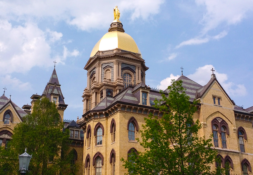
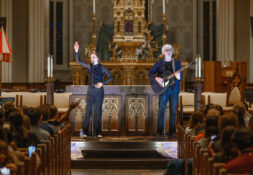

Leave a Reply